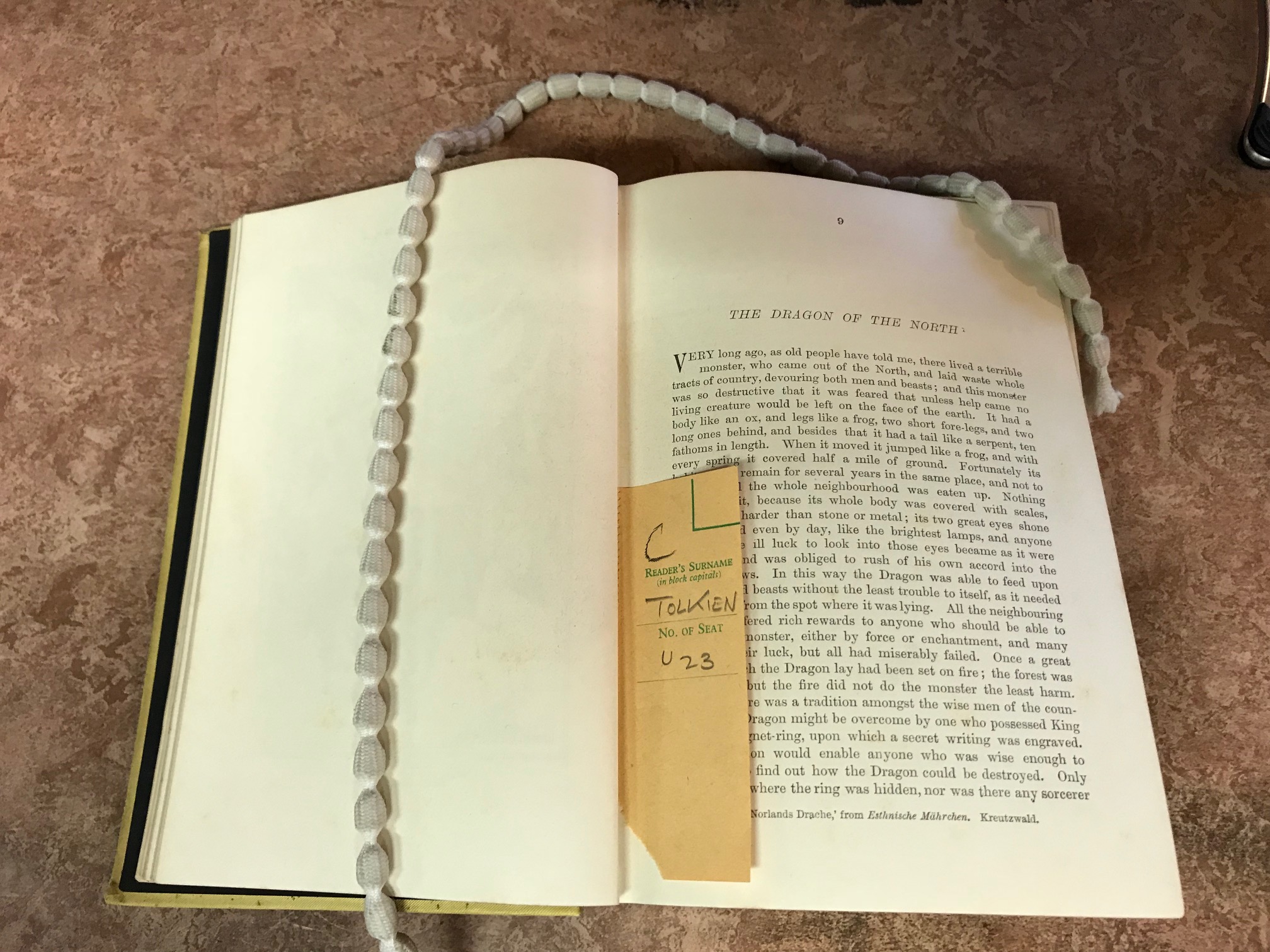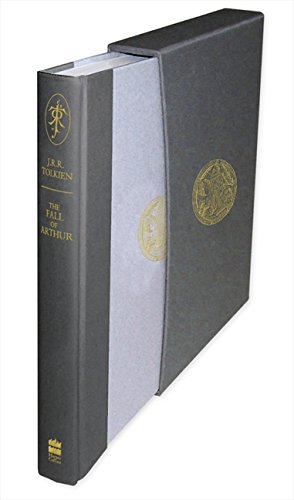Interesting find at the Bodleian
20 Feb, 2018
(edited)
2018-2-20 7:39:05 PM UTC
2018-2-20 7:39:05 PM UTC
A piece of Bodleian History: Clues from the Stacks

Some books just aren't checked out very often...
[Update] I've been asked to add a bit of additional information for the book pictured: it is The Yellow Fairy Book (ed. Andrew Lang)
From the article link above:

Some books just aren't checked out very often...
[Update] I've been asked to add a bit of additional information for the book pictured: it is The Yellow Fairy Book (ed. Andrew Lang)
From the article link above:
I contacted the Bodleian’s Tolkien Archivist, Catherine McIlwaine, who was able to confirm this. She explained that Tolkien looked at the book ahead of giving his famous Andrew Lang lecture at the University of St Andrews on 8th March 1939.
[...]
Library records show that Tolkien consulted the book, among others, on the 27th February 1939.
[...]
At 10:30am Tolkien requested to see:
The Olive Fairy Book, ed. by A. Lang (1907)
The Book of Dreams and Ghosts, by A. Lang (1897)
The Lilac Fairy Book, ed. by A. Lang (1910)
The Green Fairy Book, ed. by A. Lang (1892)
Favourite Fairy Tales (Fairy tales retold) 1907
The Brown Fairy Book, ed. by A. Lang (1904)
The Crimson Fairy Book, ed. by A. Lang (1903)
The Violet Fairy Book, ed. by A. Lang (1901)
The Yellow Fairy Book, ed. by A. Lang (1894)
Later on, at 11:30am, he requested:
Fairy Gold, a book of old English Fairy Tales chosen by Ernest Rhys (1907)
The Secret Commonwealth of Elves, Fauns and Fairies (compiled in 1893) by Robert Kirk
Essays in Little by A. Lang (1891)
Perrault’s Popular Tales, ed. by A. Lang (1888)
The Magic Ring, and other stories from the Yellow and Crimson Fairy Books, ed. by A. Lang (1906)
English Fairy and other folk tales, selected and edited by Edwin Sidney Hartland (1893)
[...]
The slip we found was left in the book at the beginning of The Dragon of the North a story about a courageous youth who defeats a man-eating dragon. He manages this feat with a magic ring, stolen from a witch maiden. Amongst many of its powers, if placed on the third finger of the left hand, it turns the wearer invisible. In the end, the ring is too powerful, and the youth learns that ‘ill-gotten gains never prosper’ when the witch retrieves the ring and punishes him for his deception. There is a eucatastrophe- the term Tolkien coined to describe happy endings in Fairy Tales- as the youth is rescued and made king.










 2
2 190
190